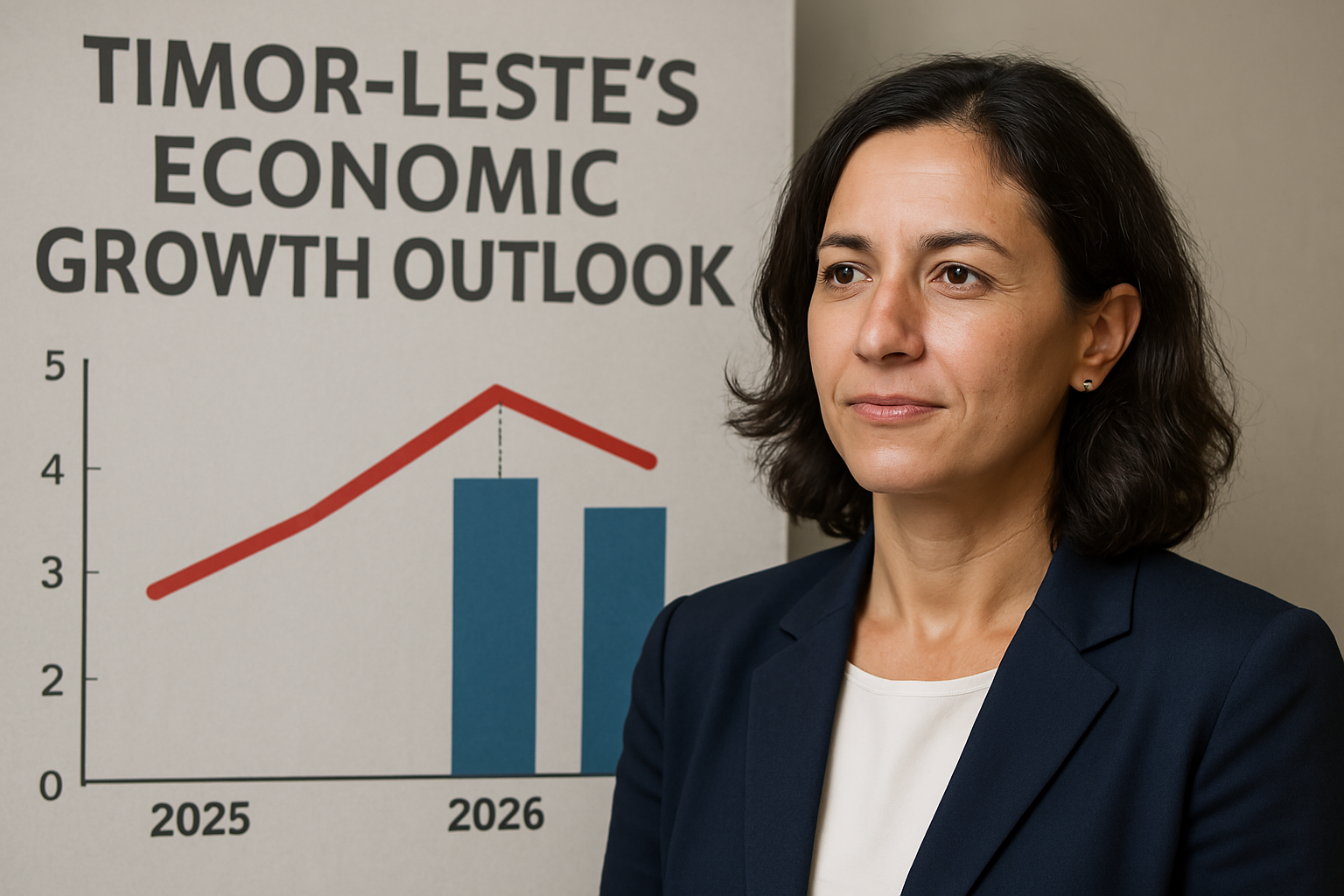Timor-Leste’s Economic Growth Outlook: Projected 3.9% Growth from 2025 to 2026
The ADB's forecast highlights the key factors propelling Timor-Leste's economy, such as growing capital investments and rising private consumption.

Timor-Leste is poised for a period of steady economic growth, with projections indicating an average annual growth rate of 3.9% from 2025 to 2026. This positive outlook is driven by a combination of factors, including increased consumer demand, government-led fiscal policies, and a rise in private sector investments. According to the Asian Development Bank's (ADB) April 2025 update to its flagship report, the Asian Development Outlook (ADO), the country is expected to experience a growth rate of 4.0% in 2025, with a slight dip to 3.8% in 2026.
The ADB's forecast highlights the key factors propelling Timor-Leste's economy, such as growing capital investments and rising private consumption. The country has witnessed a consistent increase in service sector activity, which is expected to continue to expand throughout the forecast period. ADB's country director for Timor-Leste, Stefania Dina, remarked, "Timor-Leste's economic growth is expected to accelerate, driven by rising domestic demand and improved budget execution, setting a promising path forward.”
The report further emphasizes the government's expansionary fiscal policy as a crucial factor in fostering growth. Increased public spending, coupled with better execution of public projects, has contributed to a favorable economic environment. However, ADB stresses that to maintain long-term growth, strategic investments in human capital are essential. Enhancing education, healthcare, and vocational training will not only help diversify the economy but will also bolster resilience to future economic challenges.
Inflationary pressures are expected to remain relatively low, with average inflation forecast to stay at 2.8% for the 2025-2026 period. This stability is largely attributed to a global reduction in food prices, which, combined with minimal price hikes in non-tradable goods and services, will keep inflation manageable. Additionally, the moderate increase in global trade prices will help maintain stable prices within the domestic economy.
Despite the overall positive outlook, risks to Timor-Leste’s economic trajectory remain. The ADB highlights the vulnerability of the nation to natural disasters, especially given its geographic location and exposure to extreme weather events. Such occurrences could disrupt infrastructure development and strain resources. Furthermore, uncertainties in global trade, especially with the recent US administration’s announcement of new tariffs on April 2, 2025, could further impact the country’s economic performance. While the ADB’s projections do not yet account for these changes, the potential impact of tariffs on Asia-Pacific growth is thoroughly analyzed in the report.
The ADB also warned about the risks posed by slow public investment execution and the possible negative effects of weakened public service delivery. Although the Timor-Leste government has made strides in improving governance and public sector management, delays in implementing infrastructure and development projects remain a challenge. These issues could hinder the country’s ability to fully capitalize on the economic opportunities presented by its growing private sector and increasing capital flows.
Looking ahead, Timor-Leste faces both challenges and opportunities. The ADB suggests that strengthening governance frameworks and investing in infrastructure will be key to enhancing the country’s competitiveness and ensuring sustained growth. Additionally, addressing key structural issues, such as diversifying the economy away from its reliance on oil revenues, will be crucial for achieving long-term economic stability.
In conclusion, Timor-Leste’s economic prospects for the coming years are largely favorable, but achieving sustainable growth will require focused efforts to address structural vulnerabilities, foster human capital development, and manage external risks such as global trade disruptions and climate-related disasters. If these challenges are successfully navigated, the country could unlock its full potential, transforming into a more resilient and diversified economy.
The ADB’s report emphasizes that Timor-Leste is on the right path but must continue to invest in key sectors to ensure its future prosperity.
- READ MORE ON:
- Timor-Leste
- economic growth
- Asian Development Bank










